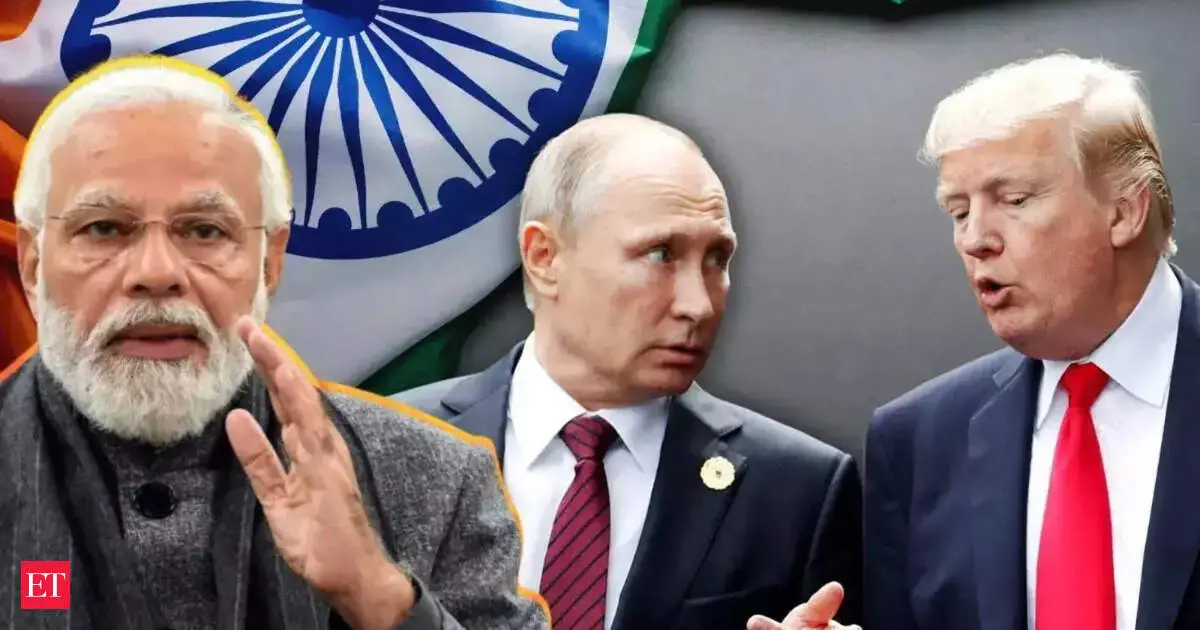New Delhi: India’s government is optimistic that the U.S. will reconsider the recent 25% tariff imposed on Indian goods due to the country’s oil imports from Russia. Discussions are underway with exporters to ramp up exports in sectors like textiles and jewellery while preparing financial aid for affected businesses, a government source revealed.
Negotiations with the U.S. on Tariffs
The Indian government is actively seeking a resolution to the additional 25% tariff imposed by the U.S. on Indian goods, primarily as a punitive measure for India’s import of Russian oil. This tariff, introduced as a response to geopolitical tensions, has put significant pressure on various sectors of the Indian economy. Officials in New Delhi believe that discussions with U.S. counterparts could yield a favorable outcome, potentially alleviating some of the burdens on exporters.
A government source mentioned, “We are hopeful that the U.S. will review its decision on the tariffs. This has become a pressing issue for our exporters, and we are committed to finding a solution.” This sentiment reflects the broader concerns within the Indian economy, where sectors such as textiles, leather, and jewellery form a vital part of trade relations with the U.S. and other international markets.
Efforts to Boost Export Sectors
In response to the mounting challenges, the Indian government is engaging exporters in a comprehensive dialogue aimed at maximizing shipments across various industries. Exporters in textiles and leather have reported mixed results in recent months due to supply chain disruptions and changing global demands. By prioritizing these sectors, the government hopes to enhance their competitiveness in international markets.
Moreover, the gems and jewellery sector is especially critical, employing millions across the country. Indian artisans are known for their exquisite craftsmanship, and increased exports in this area could prove beneficial not only economically but also culturally. “We have the skills and the products that resonate with consumers globally, and there is significant untapped potential,” says Ramesh Kumar, a leading exporter in the gems and jewellery sector.
Financial Support for Affected Businesses
To further assist exporters, the Indian government plans to roll out financial aid for businesses struggling with the impact of the tariffs. This initiative is likely to include low-interest loans, grants, and even tax relief for sectors most affected. This is viewed as an essential step to ensure that businesses remain afloat during these tumultuous times.
Small to medium-sized enterprises (SMEs) in particular stand to benefit from this support. Many SMEs have reported a decline in orders and revenue due to the tariffs. For instance, a textile company in Gujarat, which primarily relies on international orders, has seen a 30% drop in shipments since the tariffs were enacted. “Without government support, we are at risk of losing our operations,” said Arun Patel, the owner.
The Bigger Picture: Impact on the Indian Economy
The repercussions of the U.S. tariffs extend beyond individual businesses. As a significant part of the Indian economy, exports from sectors like textiles, leather, and gems contribute massively to job creation and GDP growth. The government’s efforts reemphasize the resilience and adaptability of the Indian economy, even when faced with external pressures.
Inflation and interest rates, overseen by the Reserve Bank of India (RBI), may also play a role in shaping future economic policy. The RBI’s repo rate decisions could be influenced by how external trade scenarios develop, particularly with the U.S. adjustment to tariffs. A stable economic environment is crucial for sustaining growth and managing inflation — challenging yet achievable with the right strategies in place.
In conclusion, the Indian government is hopeful about a positive review of U.S. tariffs, while actively working to bolster its export sectors through dialogue with exporters and financial support measures. In times of uncertainty, adaptability and resilience are key, and India’s efforts reflect a commitment to navigating these challenges head-on.
Bankerpedia’s Insight💡
This news underscores a critical juncture for India’s trade relations, particularly amidst rising tensions over tariffs linked to geopolitical issues. The outcome of negotiations with the U.S. will significantly influence the banking and finance sector, as banks may face increased loan defaults from exporters struggling under tariffs. Moreover, the government’s support for businesses can stabilize the economy but may also mean greater scrutiny of fiscal policies. For readers, staying informed about these developments is essential, as they could affect investment decisions and consumer prices in the near future.
What Does This Mean for Me?🤔
- Salaried Person → Potential for job security and export growth opportunities.
- Business Owner → Potential tariff relief could benefit export-focused businesses.
- Student → Potential increase in job opportunities in export sectors.
- Self-employed → Potential for increased export opportunities and financial support.
- Homemaker → Potential increase in affordable imports for household needs.
- Retiree / Senior Citizen → Potential for increased market stability and job opportunities.
- Job Seeker → Potential increase in job opportunities in affected industries.
- Farmer / Rural Citizen → Potential increase in export opportunities and financial assistance.
Research References📚
- economictimes.indiatimes.com
- RBI
- SEBI
- Ministry of Finance
- NABARD
- Department of Financial Services (DFS)
📲 Stay ahead in banking & finance!
Join the Bankerpedia WhatsApp Channel for instant updates, and
subscribe to our YouTube Channel for in-depth analysis and expert explainers.










